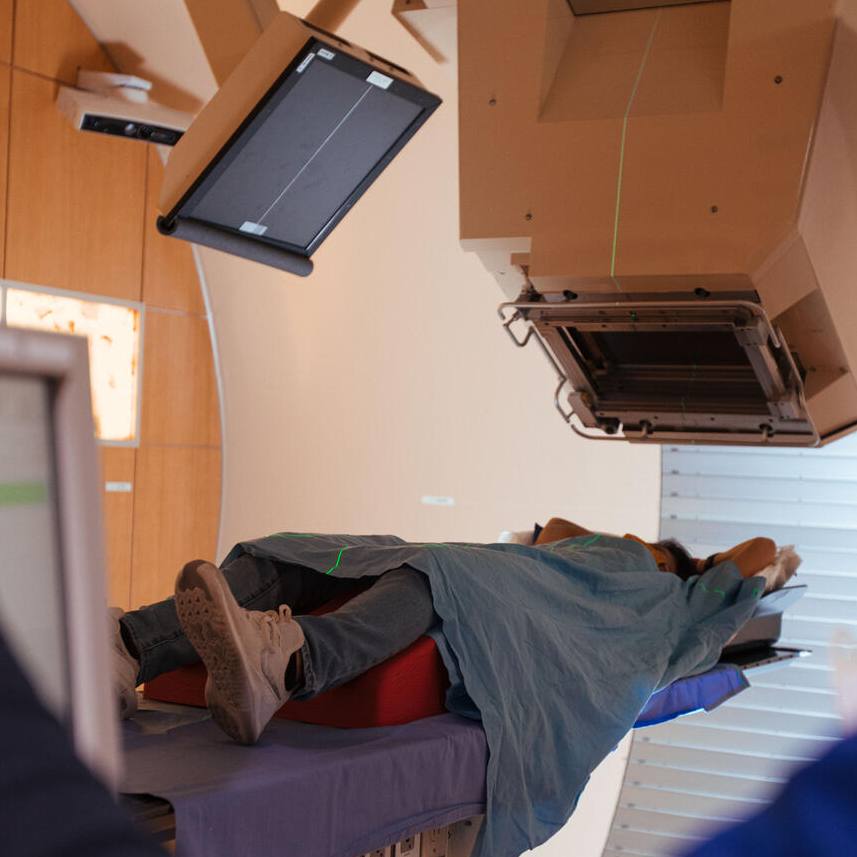-
Sister Mary Joseph Nodule: Famous Medical Term Has a Connection to Mayo Clinic

As a research trainee in the Department of Neurosurgery, Thirusivapragas (Siva) Subramaniam, M.B.B.S., had long known that a small lump near a patient’s belly button can indicate certain types of cancer.
While the term for this clinical finding – Sister Mary Joseph Nodule – is standard throughout the world, the story behind the name is less well known.
Through a series of events that he describes as “a miraculous thing,” Dr. Subramaniam researched the origin of the term and published his findings in Journal of Clinical Anatomy. The project spanned his work as a research trainee in the Department of Neurosurgery from 2019-2020 and, currently, as a visiting scientist in the surgical innovation section of the Department of Surgery.
In this interview, he shares the back story of his discoveries while writing his article, “Sister Mary Joseph nodule and the mystery behind its nomenclature.”
It began on a typical Monday morning:
“As I opened the door to my office on the eighth floor of the Gonda Building, a medical textbook fell off the shelf. It landed on my desk with the page open to ‘Sister Mary Joseph Nodule.’”
What did you think when you saw the book fall open to a reference for this condition?
The timing was amazing. I had taken a Sunday stroll the day before and ended up in front of the Gonda Building where there are statues of Dr. William Worrall Mayo and Mother Alfred Moes (Feith Family Statuary Park). I stood there admiring those two great people with utmost respect and admiration.
My attention went toward Mother Alfred Moes. I thought of the great love and care that Catholic Sisters have for humanity. Having worked at the Mother Teresa Hospital in Vellore, India, early in my surgical practice, I admire the devotion that women of the cloth have for people of all backgrounds. We live in a world where selfless work is not given much recognition. At that moment, I wanted to write or do something that would express appreciation to people who live such dedicated lives.
The next morning, when the book fell in front of me with the page open to Sister Mary Joseph Nodule, it seemed like destiny. I looked up Sister Mary Joseph on a search engine. Even though I’ve known about the nodule since medical school, I never realized its name had any connection with Mayo Clinic until that moment. I asked some of the international research trainees with whom I share the office. They all knew about the Sister Mary Joseph Nodule, but none of them knew it was named after a person at Mayo Clinic. I had the same experience with several other colleagues I asked.
Who was Sister Mary Joseph and why is the nodule associated with her?
Sister Mary Joseph Dempsey was the superintendent of Saint Marys Hospital and, for about 25 years, she served as the first surgical assistant to Dr. William J. Mayo, who specialized in gastric operations.
She observed this sign in patients with cancer of the stomach, pancreas, urinary tract, female reproductive organs and sometimes cancer of the lungs, and called it to the attention of Dr. Mayo. Sister Joseph and Dr. Mayo referred to her finding it as “pants button umbilicus” because the nodule resembles a button on a pair of trousers.

What did you discover as you investigated this topic?
I found unexpected connections, a mystery and a surprise.
The connection – The term Sister Mary Joseph Nodule was coined by a British surgeon named Hamilton Bailey, who first used it in the 11th edition of his book, “Physical Signs in Clinical Surgery.” Bailey’s work is a classic, known as the “Bible of surgery” in the U.K. and all commonwealth nations. I’m a British physician, so his book was a key part of my medical education. An even closer connection – I was trained by several physicians and professors who were students of Hamilton Bailey.
The mystery – Bailey coined the term in the 1949 edition of his book, which was published a decade after Sister Mary Joseph and both Mayo brothers died. Bailey never visited Mayo Clinic or had any interactions with Sister Mary Joseph or Dr. Will and Dr. Charlie. I was puzzled about how the name “Sister Mary Joseph” travelled across the Atlantic to be used as a medical term by a person who had absolutely no connection with Mayo Clinic, which led me to research and write the article.
The surprise – I learned that Hamilton Bailey experienced mental illness at the time this edition of his book was being developed. His wife, Veta (also called Vera), was instrumental in revising the manuscript prior to its publication in 1949.
In light of Bailey's meticulous practices of citation and reference, it is likely that he coined the term Sister Joseph's nodule with its discoverer in mind. He acknowledged Sister Joseph's expertise at a time when women's contributions were typically not recognized, or their work was plagiarized. Bailey was known for honoring discoverers and contributors to his textbooks in explicit detail, and through this practice it is likely that he named the paraumbilical nodule intentionally after its discoverer.
— Thirusivapragas Subramaniam, M.B.B.S., in "Sister Mary Joseph nodule and the mystery behind its nomenclature," Clinical Anatomy, Dec. 2021.
What have been the outcomes of your research?
During review of the archival sources, I realized Mayo did not have a copy of Bailey’s 1949 edition. Staff in the W. Bruce Fye Center for the History of Medicine and W. Bruce Fye History of Medicine Library were able to locate a copy to add to the institutional collection, so I’m honored that this article helped bring the first published reference of Sister Mary Joseph Nodule “home” to Mayo Clinic.
In the journey of this research, I came to understand the ethos of Mayo Clinic from the collaboration of Dr. W.W. Mayo and Mother Alfred Moes in 1883 to the present time. The story of Sister Mary Joseph is emblematic of what Mayo stands for. So are the wonderful people I met, who are listed in the acknowledgments of the article. Above all, I wish to thank my present supervisor, Jordan Miller, Ph.D., for granting me permission to write this article.
As Mahatma Gandhi said, “It is the individual self-discipline and character which cumulatively makes an institution or a nation worthy of praise and greatness.” During this project, I was able to witness through many wonderful people, past and present, why Mayo Clinic is so esteemed in the world.
Dr. Subramaniam expresses appreciation to colleagues in Mayo Clinic Scientific Publications: Margery Sherman, Svenja Muenter and Joshua Fox.
###
This story story originally appeared in an internal newsletter about Mayo Clinic History & Heritage.







